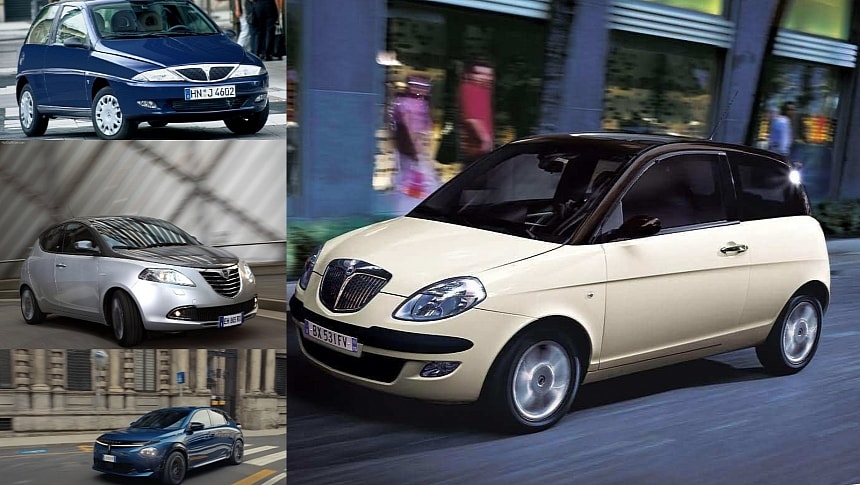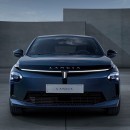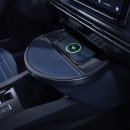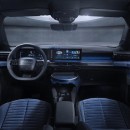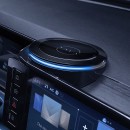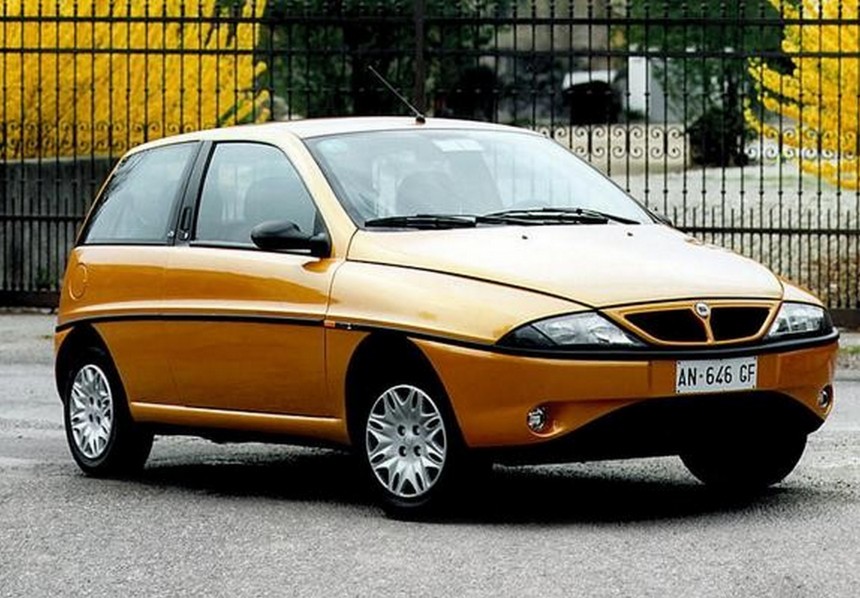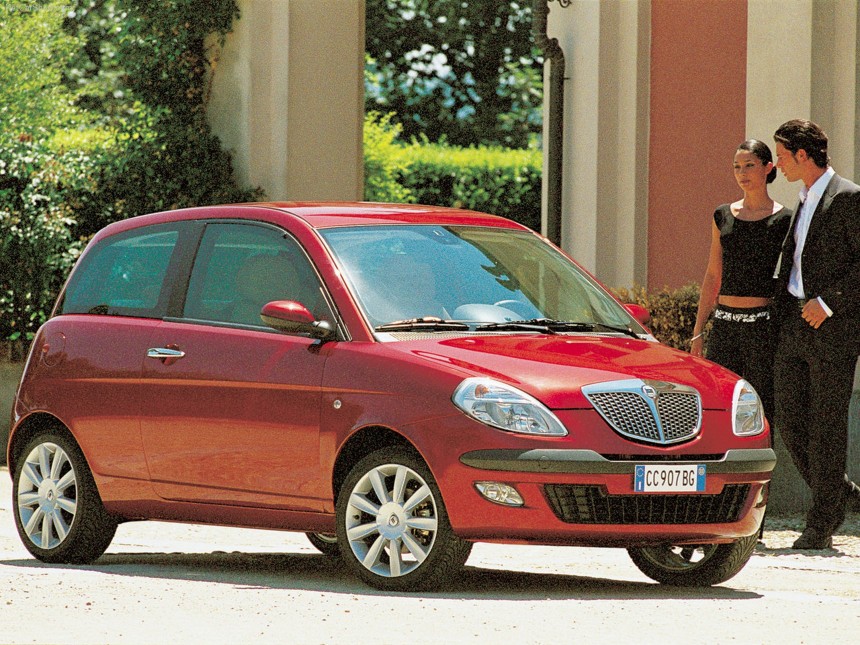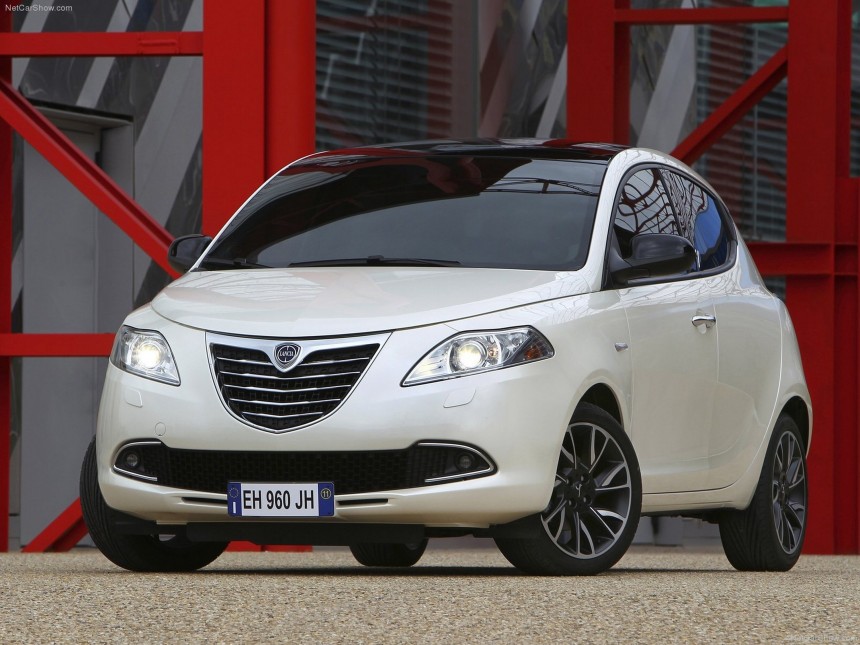We're conditioned as car enthusiasts to poke jokes at cars that don't excite the eyes in some way. Not to say that every hatchback has to look like a Ferrari, but people are more likely than not to forgive a vehicle's faults if it's got looks that make you forget the downsides. By the same token, we rip into ugly cars like tissue paper after a Del Taco binge. At least the really ugly ones get that treatment. Some others manage to skirt beneath our noses for one reason or another.
In some cases, it's because a car isn't quite as objectively disgusting as the Fiat Multiplas and Pontiac Azteks of the world. In others, it's only because most of us were totally unaware of its existence. This is the case with the Lancia Ypsilon, a car so ugly even its mother wretches at it but not so up in your face about it that you notice it. That's assuming the thing was sold within a few thousand miles of wherever you may reside. Admittedly, it was still a decent family car.
The last Stratos left the production room floor in 1978, and the last road-spec Delta HF Integrale "Evoluzione" was done and dusted by the early 1990s. At this time, what Lancia needed most of all was a new sense of direction. A winning formula that could see the company into the 21st Century without grasping onto rally racing credentials the company wasn't all that keen on replicating in the future. In short, if Lancia was to survive as a brand in the era after the rally racing giants, they'd have to appeal to people we petrolheads would refer to as "normies."
AKA, the kinds of people who buy cars for reasons other than looks or an exuberant driving experience. In fairness, Lancia was no stranger to building these kinds of cars. Notable normal Lancia passenger cars of the period included the Thema executive estate, the Beta mid-sized coupe, and the re-badged Y10 city car, which did at least prove Lancia had a more reasonable side, aside from the rally racing lunacy the company is still known for. But as the 80s gave way to the 90s, it was clear that Lancia needed to throw its hat into the eternally drab but equally profitable B-Segment supermini sector.
In the same market segment as the original Renault Clio, the 80-series Toyota Starlet, the Fiat Uno, and the Ford Fiesta, Lancia needed a design that was both eye-catching and reliable in order to have a hope of competing. As such, it's said that Lancia spent over 400 billion Italian Lira developing the platform that'd ultimately become the first-generation Ypsilon. This included hiring the world-renowned automotive designer and ex-Pinninfarina hot shot Enrico Fumia to sketch up the preliminary design language in 1992.
After two long years of development, the gen-I Lancia Ypsilon, or the Lancia Y as it was also known, was presented to the awaiting public in Rome in January 1996. To say reactions to how Lancia's new supermini looked were mixed would probably be an understatement. With a basic silhouette that looked more like an egg than it did a motorcar, plus a front grille that gave a vibe of malaise and indifference, the 176-series Fiat Punto-based, first-gen Lancia Ypsilon was a total block of Italian Formaggio on four wheels.
Never mind the presence of a peppy Fiat Fire-series four-cylinder engine and the option for a proper six-speed manual gearbox, it was plain to Lancia themselves and their potential customers that this was far removed from the sporty, fun-loving brand the brand once was. Even the special edition Ypsilon Elefantino Rosso, meant to throw back to the old-school HF Lancias of rally racing fame, did little more than tune up the suspension, shorten the throw of the manual gear stick and throw a bit of alcantara in the interior.
This is not to say the Gen-I Ypsilon wasn't a practical machine; just look at that cavernous rear hatch for crying out loud. The fuel economy was probably something to behold as well, so it'd be wrong to say the Ypsilon was a car without its merits. But still, just look at that front grille. Could you believe it could only get worse from there? Well, starting in 2003, Lancia proved just how much worse the Ypsilon could look. With a design purported to have been inspired by the 1940s-vintage Lancia Ardea, you could've convinced us just as quickly that the second-gen Ypsilon was styled after Shrek's face.
Just look at that puckered little front grille and those amorphous blobs for headlights. It's like Lancia took the rolling chassis from a 188-Series Fiat Punto, slapped on whatever was hanging out inside the parts bin, and then gave it a face that frightens young children like a birthday clown that lives in your driveway. A subsequent rear facelift in 2006 only served to make the Ypsilon look like two different cars glued together with liquid nail. Seriously, it's like the front and rear were designed by two different teams that never got within the same area code as one another.
Knowing the second-gen Ypsilon was a fair bit larger and heavier than the first with a list of engines, of whom none exceeded 100 horsepower, the successor vehicle was neither fun to look at nor fun to drive. But what could Lancia do at the time to spice things up going into the Ypsilon's third generation in 2011? If your answer was to link up with a Fiat-Chrysler merger that legitimately almost sank both companies and keep building the same spit-ugly car they'd been making, just mildly updated, then you'd be right in that case, sadly.
In fairness, the final design for the Ypsilon's third generation had already been finalized before the FCA merger, which some argue Chrysler still hasn't fully recovered from. The car was designed in-house by Alberto Dilillo, a designer at the Lancia Style Centre in Italy, although you could've convinced us it was designed by an AI whose prompt was "update this really ugly car to be more modern without breaking the budget or making too many real changes."
This time around, the third-generation Ypsilon was based on the then brand-new Fiat Mini architecture that also featured the reborn 500 city car. Admittedly, this meant the gen-III Ypsilon had the option to use Fiat's eternally-cool 900cc TwinAir two-cylinder engine and its CNG-fueled EcoChic twin. That's besides the option for a 1.2-liter four-cylinder engine on option as well, but we can imagine such a small but furious little engine being a huge selling point.
This time around, Lancia showcased an ultra-high-end concept vehicle based around the Ypsilon architecture and dubbed the Ypsilon Diamond. But this did little to stir up fanfare from luxury car buyers who already owned BMWs, Saabs, and Audis. The car was also marketed in Japan under Chrysler badging and called the Chrysler Ypsilon. You can probably imagine how well that went. That's right, they hardly sold a single one over there. Admittedly, two back-to-back front-end redesigns in 2015 and 2022 did make the gen-III Ypsilon less offensive to look at. But come on, it's still not exactly a looker.
In spite of its visual flaws, the Ypsilon remained a strong seller in its native Italy during the years of its second and third generations. Meanwhile, the moniker pretty much dropped off the face of the Earth everywhere else. In an ideal world, that'd be the end of the Lancia Ypsilon's story
It was just a right-minded idea for the brand's future but executed rather poorly. But in 2024, Lancia's new corporate overlords at Stellantis group decreed that Ypsilon's story was not yet over. In EV form, the fourth-gen Ypsilon looked radically different from its extended family.
Gone was the gaping fish mouth of past Ypsilons; in its place was a not-all-that-exciting five-door hatchback on the same platform as the Jeep Avenger and the Fiat 600e, among others. Although not vile to look at like prior Ypsilons, it's still not what most people would call pretty. But heck, at least the Stratos-inspired tail lamps are neat.
So then, looking back on the finer details of what's currently the only vehicle Lancia makes leads to a real mixed bag. But as stated before, it'd be downright misleading to call the Ypsilon in any of its forms a "bad" car. But could they have at least tried to make it look a little nicer? Our gut says yes.
While the above-mentioned Aztek and Multipla were certainly "ew" in their exterior design, the Lancia Ypsilon was still pretty yucky-looking, just not enough to get keyboard warriors angry. In truth, the Lancia Ypsilon is so much more than an ugly face, but rather a four-wheeled manifestation of Lancia's fall from grace as a manufacturer of flawed but loveable performance cars to dull, tasteless makers of dreary econoboxes. Fates and fortunes hadn't been all that kind to Lancia in the years following the height of its cultural impact with the Stratos, the 037, and the first-generation Delta Integrale.
The last Stratos left the production room floor in 1978, and the last road-spec Delta HF Integrale "Evoluzione" was done and dusted by the early 1990s. At this time, what Lancia needed most of all was a new sense of direction. A winning formula that could see the company into the 21st Century without grasping onto rally racing credentials the company wasn't all that keen on replicating in the future. In short, if Lancia was to survive as a brand in the era after the rally racing giants, they'd have to appeal to people we petrolheads would refer to as "normies."
AKA, the kinds of people who buy cars for reasons other than looks or an exuberant driving experience. In fairness, Lancia was no stranger to building these kinds of cars. Notable normal Lancia passenger cars of the period included the Thema executive estate, the Beta mid-sized coupe, and the re-badged Y10 city car, which did at least prove Lancia had a more reasonable side, aside from the rally racing lunacy the company is still known for. But as the 80s gave way to the 90s, it was clear that Lancia needed to throw its hat into the eternally drab but equally profitable B-Segment supermini sector.
After two long years of development, the gen-I Lancia Ypsilon, or the Lancia Y as it was also known, was presented to the awaiting public in Rome in January 1996. To say reactions to how Lancia's new supermini looked were mixed would probably be an understatement. With a basic silhouette that looked more like an egg than it did a motorcar, plus a front grille that gave a vibe of malaise and indifference, the 176-series Fiat Punto-based, first-gen Lancia Ypsilon was a total block of Italian Formaggio on four wheels.
Never mind the presence of a peppy Fiat Fire-series four-cylinder engine and the option for a proper six-speed manual gearbox, it was plain to Lancia themselves and their potential customers that this was far removed from the sporty, fun-loving brand the brand once was. Even the special edition Ypsilon Elefantino Rosso, meant to throw back to the old-school HF Lancias of rally racing fame, did little more than tune up the suspension, shorten the throw of the manual gear stick and throw a bit of alcantara in the interior.
This is not to say the Gen-I Ypsilon wasn't a practical machine; just look at that cavernous rear hatch for crying out loud. The fuel economy was probably something to behold as well, so it'd be wrong to say the Ypsilon was a car without its merits. But still, just look at that front grille. Could you believe it could only get worse from there? Well, starting in 2003, Lancia proved just how much worse the Ypsilon could look. With a design purported to have been inspired by the 1940s-vintage Lancia Ardea, you could've convinced us just as quickly that the second-gen Ypsilon was styled after Shrek's face.
Knowing the second-gen Ypsilon was a fair bit larger and heavier than the first with a list of engines, of whom none exceeded 100 horsepower, the successor vehicle was neither fun to look at nor fun to drive. But what could Lancia do at the time to spice things up going into the Ypsilon's third generation in 2011? If your answer was to link up with a Fiat-Chrysler merger that legitimately almost sank both companies and keep building the same spit-ugly car they'd been making, just mildly updated, then you'd be right in that case, sadly.
In fairness, the final design for the Ypsilon's third generation had already been finalized before the FCA merger, which some argue Chrysler still hasn't fully recovered from. The car was designed in-house by Alberto Dilillo, a designer at the Lancia Style Centre in Italy, although you could've convinced us it was designed by an AI whose prompt was "update this really ugly car to be more modern without breaking the budget or making too many real changes."
This time around, the third-generation Ypsilon was based on the then brand-new Fiat Mini architecture that also featured the reborn 500 city car. Admittedly, this meant the gen-III Ypsilon had the option to use Fiat's eternally-cool 900cc TwinAir two-cylinder engine and its CNG-fueled EcoChic twin. That's besides the option for a 1.2-liter four-cylinder engine on option as well, but we can imagine such a small but furious little engine being a huge selling point.
In spite of its visual flaws, the Ypsilon remained a strong seller in its native Italy during the years of its second and third generations. Meanwhile, the moniker pretty much dropped off the face of the Earth everywhere else. In an ideal world, that'd be the end of the Lancia Ypsilon's story
It was just a right-minded idea for the brand's future but executed rather poorly. But in 2024, Lancia's new corporate overlords at Stellantis group decreed that Ypsilon's story was not yet over. In EV form, the fourth-gen Ypsilon looked radically different from its extended family.
Gone was the gaping fish mouth of past Ypsilons; in its place was a not-all-that-exciting five-door hatchback on the same platform as the Jeep Avenger and the Fiat 600e, among others. Although not vile to look at like prior Ypsilons, it's still not what most people would call pretty. But heck, at least the Stratos-inspired tail lamps are neat.
